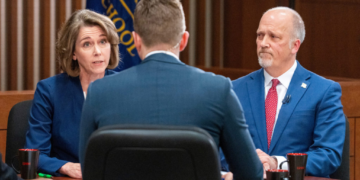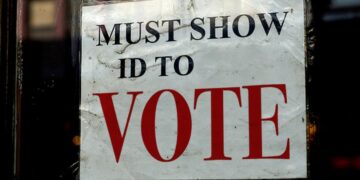Here in Wisconsin, a bill to implement ranked-choice voting was introduced in the 2023-24 legislative session by state Sen. Jeff Smith, D-Brunswick, and sponsored by almost 20 other legislators. Dubbed the “Final Five” bill by Smith, it received a committee hearing in December but was not moved forward since.
Ranked-choice voting, which has taken hold in the far-left bastions of Hawaii, Maine, New York City, and Alaska, eliminates partisan primaries and forces voters to rank candidates in order of preference. If a candidate gets more than 50 percent of the vote, then that candidate is declared the winner.
If the candidate does not receive 50 percent of the vote, the votes are counted, and the candidate who is ranked first on the fewest ballots is eliminated. The ballots that featured the eliminated candidate as the first choice are then recounted, and each voter’s second choice is elevated to first. Votes are awarded to the remaining candidates accordingly. The process is repeated until only one candidate gets more than 50 percent of the vote.
This is an incredibly time-consuming and labor-intensive process that is prone to constant error. Voters in New York City waited nearly a month in 2021 for the results of their mayoral primary election, while a school board race in Alameda County, California was upended in late 2022 when a tabulation mistake led to the wrong candidate being declared the winner (the third-place finisher actually won).
This system was so disastrous in Pierce County, Washington, that it was abandoned just four years after being implemented — but not before spending $1.6 million on it during the 2008 election cycle.
Ranked-choice voting isn’t just expensive; it also can disenfranchise voters when their ballots are “exhausted” and then ultimately thrown out. In a ranked-choice election with five candidates, voters must rank each of the five. But what happens if they don’t? Say a voter ranks just two of five candidates because he doesn’t like any of the other three. In the first round of voting, his candidate finishes last and is eliminated. In the second round of voting, his second choice becomes his first. If that candidate finishes last, then the voter’s ballot is exhausted. In the third round of voting, it is simply thrown out and not counted. That voter essentially doesn’t get a say in who ultimately wins the election because his votes stopped counting after the second round.
Some claim ranked-choice voting unconstitutionally eliminates the Constitution’s “one person, one vote” doctrine. Consider the Trump-Biden election of 2020: A voter chooses either Trump or Biden or any of the other minor party candidates and her vote is counted once in the total for the candidate she chooses. Not so in ranked-choice voting. If a voter refuses to rank each of those minor party candidates or, say, hates Biden so much that she just can’t bring herself to rank him at all, she runs the genuine risk of her vote not counting at all.
Ranked-choice is a progressive-backed policy and has now found its way to Wisconsin. The decision on whether it should be implemented in the state is one that Wisconsin is still to be faced.



























